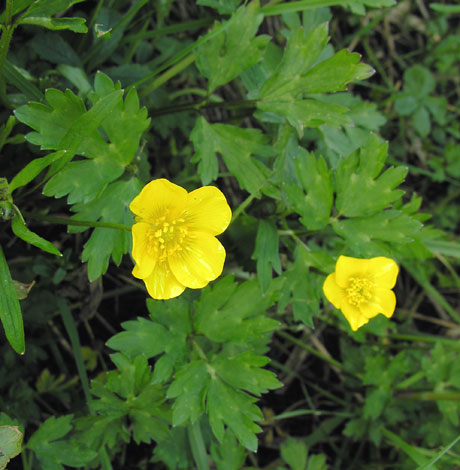
Single achenes most often measure 2-3 mm. It is a widespread species of flowering plant in the family Ranunculaceae. It is also seen in disturbed places such as parks, gardens and roadside ditches. As with white clover, the stolon system allows. Wild Buttercup grows in damp grassland, near streams and in marshes, from the coast up to 2 900 m and spreads freely by means of seeds and runners.

The fruit of this species will be a typical for the genus, ovate cluster of achenes, 5-7 mm in diameter, made of a dozen or several dozen bare, reverse elliptical, flat achenes. The creeping buttercup is the only buttercup species commonly found in New Zealand which has a stolon system. A creeping crowfoot is a dichogamous species (first its stamens, then pistils ripen), but it is capable of if necessary to self-pollination. The flowers are very similar to other buttercups: shiny, bright yellow, bisexual, radiant, 5-petal, with a huge, and very variable number of pistils and stamens. It produces deeply cut, variable, leaves with three leaflets, with wedge-shaped bases and elongated, bare pedicels. It releases well-leaved creeping shoots, at the same time strongly rooting in nodes, fully or partially raised above the ground, and stems slightly hairy, slightly s-shaped, usually 0.1-0.6 m high. In Volume 2, we’ll be learning about 5 Native flowers.


Some of these plants are endemic to our archipelago (the Lucayan Archipelago), which means that they are not found any where else in the world. The Bahamas has many native plant species. A permanent plant, develops characteristic runners (which distinguish it well from the meadow buttercup), slightly tomentosed shoots and typical of the genus, bright yellow, waxed flowers. In Volume 1 we covered 4 native Bahamian plants, some of which had medicinal values.


 0 kommentar(er)
0 kommentar(er)
